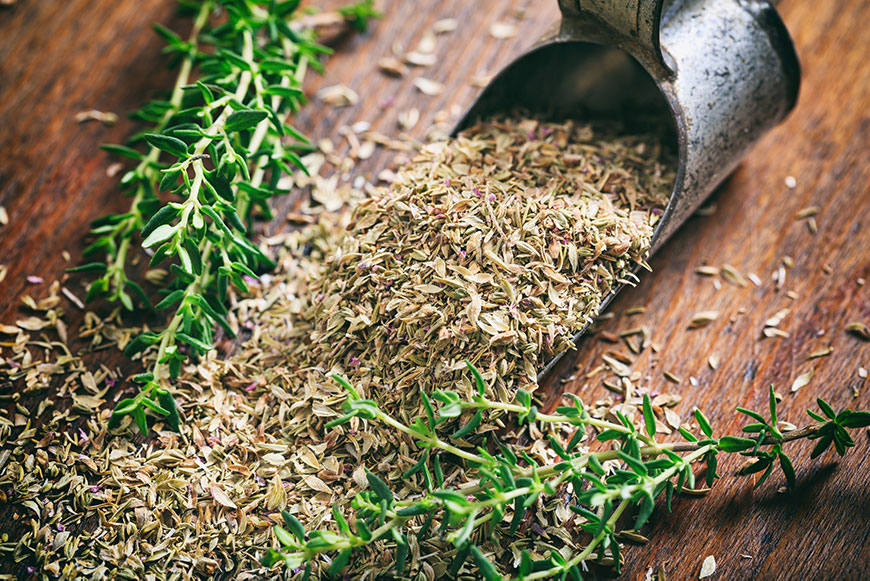What is the Difference Between Fresh Herbs and Dry Herbs?
Fresh herbs and dry herbs are the same herbs in different forms. Fresh herbs are often picked straight off the stem, bright green, soft, and fragrant. Dry herbs go through some form of drying process, are usually packaged in a jar or packet, are a dull green or brown color, and are also fragrant. While fresh herbs can go bad, dry herbs will lose their smell and flavor over time when sitting in a jar.
When Do You Use Fresh Herbs?
Fresh herbs are best used toward the end of the cooking process to protect the fresh flavor. They should not be used in long cooking processes unless the fresh herbs are added toward the end. Fresh herbs are more often used as a garnish, in fresh or uncooked dishes like salads, and mixed in sauces and dressings.

When Do You Use Dry Herbs?
Dry herbs are best used during the beginning of the cooking process to help disperse the flavor. Dry herbs are best used when simmering or cooking foods for longer periods and should not be added too late into the cooking process. Foods like soups, stews, and sauces all benefit from dry herbs.
How Do You Substitute Fresh Herbs or Dry Herbs?
Fresh herbs and dry herbs will offer slightly different flavors to a dish, but they can be used in place of each other. Because dry herbs have a strong flavor when concentrated, you should use about three times the amount of fresh herbs that you would dry. If you want to use dry herbs instead of fresh herbs, you will need to use ⅓ of the amount that is called for. For example, if your recipe calls for 1 teaspoon of dried oregano, you could substitute 1 tablespoon of fresh oregano. If your recipe calls for 1 tablespoon of fresh oregano, you could substitute 1 teaspoon of dried oregano.
Fun Fact About Fresh Herbs and Dry Herbs
You can grow and dry out many of your favorite herbs in your home garden.
Did You Know?
You can crush dry herbs to help enhance their flavor before adding them to your dish.
Recipes Using Fresh Herbs
Basil Pesto
Basil pesto is a tasty, fresh herb condiment popular in Italian dishes. To make it, add basil and pine nuts into a blender or food processor and chop until fine. Then, add parmesan cheese and a garlic clove and process again. Once everything is finely chopped, slowly drizzle in extra virgin olive oil. Add this pesto to pasta and grilled vegetables like zucchini or cauliflower. If you don’t have pine nuts, you can also use walnuts.
Pan-Roasted Mushrooms with Fresh Herbs
To make this recipe, heat olive oil in a skillet. Add your choice of mushrooms and minced garlic and sauté until tender. Right before serving, add a small amount of butter and chopped parsley, thyme, and rosemary.
Recipes Using Dry Herbs
Roast Chicken With Dry Herbs and Spices
Make this roast chicken by covering it in olive oil and rubbing it with dry herbs and spices like fennel, lavender, rosemary, thyme, oregano, and marjoram. Bake the chicken in the oven until it reaches an internal temperature of 165 degrees Fahrenheit.
Garlic and Herb Roasted Carrots
Make a delicious carrot side dish by seasoning them with garlic, oregano, basil, parsley, and thyme. Season carrots with the herbs and olive oil and bake on a baking sheet until tender.
